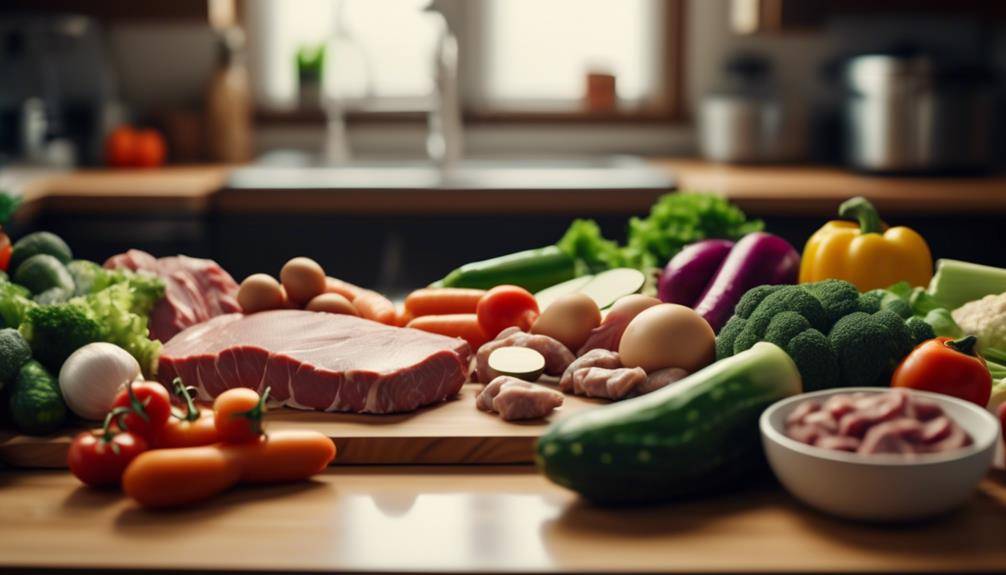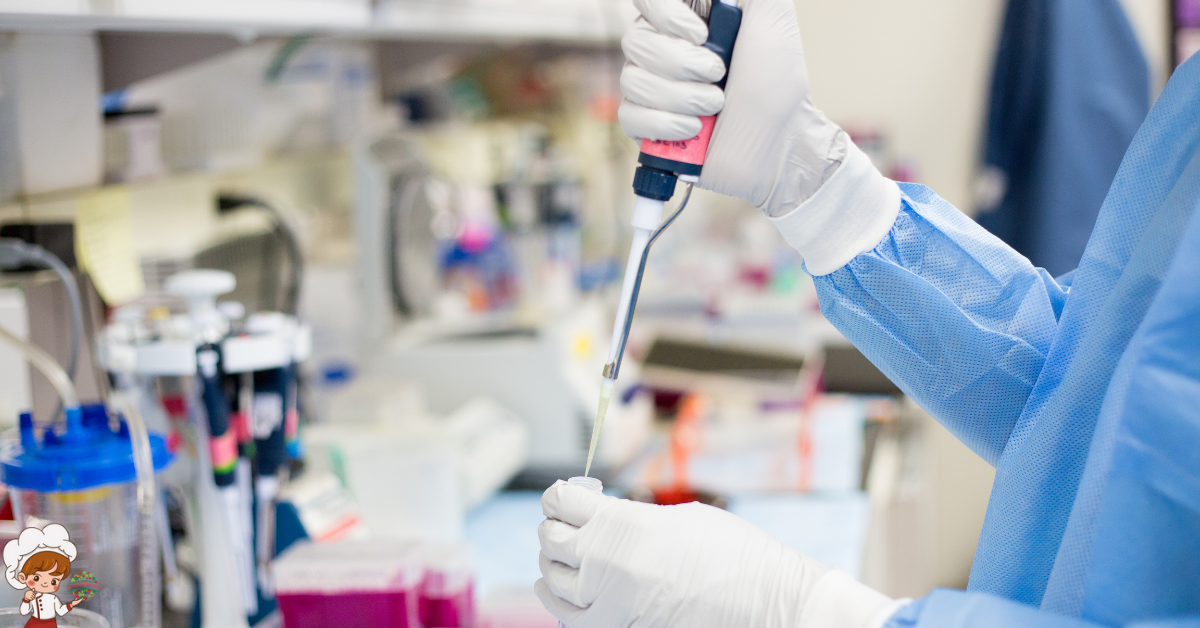How to Start Ketogenic Diet Principles

How to Start Ketogenic Diet Principles; Have you ever wondered how some people seem to effortlessly maintain a lean physique while still enjoying their favorite foods? Well, it’s time to let you in on a little secret – the ketogenic diet. This powerful approach to nutrition has gained popularity for its ability to promote weight loss, improve mental clarity, and enhance overall health. But where do you start? In this discussion, we will uncover the key principles of starting a ketogenic diet, from understanding ketosis to adjusting your macronutrient ratios and overcoming the dreaded keto flu. So, if you’re ready to unlock the secrets of this transformative lifestyle, get ready to embark on a journey towards a healthier, happier you.
Understanding Ketosis
To understand ketosis, you need to grasp the fundamental concept of how your body utilizes energy from food. When you consume carbohydrates, your body breaks them down into glucose, which is then used as the primary source of energy. However, when you limit your carbohydrate intake, your body is forced to find an alternative fuel source. This is where ketosis comes into play.
Ketosis occurs when your body switches from using glucose to using ketones for energy. Ketones are produced by the liver as a byproduct of breaking down fat. When you enter a state of ketosis, your body becomes highly efficient at burning fat for fuel. This is why many people turn to ketogenic diets as a means of weight loss.
One of the effects of ketosis is weight loss. By limiting your carbohydrate intake and increasing your fat consumption, your body is encouraged to burn stored fat for energy. This can lead to significant weight loss over time.
Another effect of ketosis is increased mental clarity and focus. Many people report feeling more alert and mentally sharp when in a state of ketosis. This is thought to be due to the brain’s ability to efficiently use ketones as an energy source.
In terms of symptoms, some people may experience what is known as the “keto flu” when first starting a ketogenic diet. This can include symptoms such as fatigue, headaches, dizziness, and irritability. However, these symptoms are usually temporary and can be minimized by staying hydrated and ensuring you are consuming enough electrolytes.
Benefits of a Ketogenic Diet
The ketogenic diet offers a range of potential benefits for those looking to improve their health and well-being. Here are some of the key benefits you can expect from following a ketogenic diet:
- Weight loss: One of the main reasons people turn to the ketogenic diet is for its ability to promote weight loss. By restricting carbohydrates and increasing fat intake, the body enters a state of ketosis, where it starts using stored fat as fuel instead of glucose. This can lead to significant weight loss over time.
- Improved mental clarity: Another benefit of the ketogenic diet is improved mental clarity and focus. When the body is in ketosis, it produces ketones, which can provide a more stable source of energy for the brain. This can help enhance cognitive function and improve mental performance.
- Reduced inflammation: The ketogenic diet has been found to have anti-inflammatory effects, which can help reduce inflammation in the body. Chronic inflammation is linked to a wide range of health issues, including heart disease, diabetes, and certain types of cancer. By reducing inflammation, the ketogenic diet may help improve overall health and well-being.
Health Considerations Before Starting
Before you embark on a ketogenic diet, it is important to consider your health and any potential factors that may affect your ability to successfully follow this eating plan. While the ketogenic diet has been associated with various health benefits, it is not suitable for everyone, especially those with certain pre-existing conditions.
One important health consideration before starting a ketogenic diet is any history of kidney or liver problems. The ketogenic diet is a high-fat, moderate-protein, and low-carbohydrate diet that can put additional stress on these organs. If you have a pre-existing condition affecting your kidney or liver function, it is crucial to consult with a healthcare professional before starting the diet.
Another health consideration is the presence of any gastrointestinal issues. The high fat content in a ketogenic diet can sometimes exacerbate symptoms such as diarrhea, constipation, or acid reflux. If you have a history of such issues, it is advisable to discuss the potential impact of a ketogenic diet on your gastrointestinal health with a healthcare professional.
Individuals with diabetes or other blood sugar-related conditions should also exercise caution when considering a ketogenic diet. The significant reduction in carbohydrate intake can lead to changes in blood sugar levels, potentially requiring adjustments to medication dosages. It is imperative to work closely with a healthcare professional to monitor and manage blood sugar levels while following a ketogenic diet.
Furthermore, individuals with a history of eating disorders should approach a ketogenic diet with caution. The restrictive nature of this eating plan may trigger or worsen disordered eating patterns. It is crucial to discuss any concerns or potential risks with a healthcare professional or registered dietitian before starting the diet.
Setting Your Macronutrient Ratios
Now it’s time to determine the ideal macronutrient ratios for your ketogenic diet. These ratios refer to the percentage of calories you should aim to get from fat, protein, and carbohydrates. While there is a general guideline of 70-75% fat, 20-25% protein, and 5-10% carbohydrates, it’s important to adjust these ratios based on your individual needs and goals.
Ideal Macronutrient Ratios
To set your ideal macronutrient ratios for a ketogenic diet, you should consider your individual needs and goals. Setting goals is important because it helps you determine the right macronutrient ratios that will support your desired outcomes. Additionally, understanding your nutritional requirements is crucial as it ensures that your body is getting the necessary nutrients while following a ketogenic diet. Here are three sub-lists to further emphasize this point:
- Determine your daily calorie intake based on your weight, activity level, and goals.
- Calculate your ideal protein intake, which is typically around 20-25% of your daily calories.
- Adjust your fat and carbohydrate intake to achieve the desired macronutrient ratios, usually around 70-75% fat and 5-10% carbohydrates.
Adjusting for Individual Needs
To tailor your macronutrient ratios to your individual needs, take into account factors such as your weight, activity level, and goals, which will help you determine the right balance of protein, fat, and carbohydrates for a ketogenic diet. Adopting an individualized approach is essential in achieving success on a ketogenic diet. While the standard macronutrient ratios for a ketogenic diet are generally 75% fat, 20% protein, and 5% carbohydrates, these ratios can be adjusted based on your specific needs and preferences.
For example, if you are an athlete or have a physically demanding job, you may need to increase your protein intake to support muscle recovery and growth. On the other hand, if you have certain health conditions, such as insulin resistance or epilepsy, you might benefit from a higher fat intake. Personalized adjustments to your macronutrient ratios can help optimize your results and ensure that you are getting the right nutrients for your body.
Foods to Include in Your Ketogenic Diet
To successfully follow a ketogenic diet, it is important to include essential ketogenic foods, such as avocados, nuts, and seeds, which are rich in healthy fats and low in carbs. These fats are crucial for achieving and maintaining ketosis. Additionally, incorporating low-carb protein sources like eggs, poultry, and fish into your meals will help you meet your protein needs without disrupting ketosis.
Essential Ketogenic Foods
Including essential ketogenic foods in your diet can help you achieve and maintain a state of ketosis. Here are some healthy snack options and meal prep strategies to consider:
- Healthy Snack Options:
- Nuts and seeds: Almonds, walnuts, chia seeds, and flaxseeds are great choices as they are high in healthy fats and low in carbs.
- Avocado: Rich in monounsaturated fats, avocados make for a filling and nutritious snack.
- Cheese: Full-fat cheese varieties like cheddar or mozzarella can be enjoyed in moderation as a keto-friendly snack.
- Meal Prep Strategies:
- Plan your meals in advance: This helps you stay on track and avoid making impulsive food choices.
- Cook in bulk: Prepare meals in larger quantities and portion them out for later use, making it easier to stick to your ketogenic diet.
- Use keto-friendly ingredients: Stock up on low-carb vegetables, high-quality proteins, and healthy fats to create satisfying and nutritious meals.
Healthy Fats for Ketosis
Incorporate a variety of healthy fats into your ketogenic diet to support ketosis and promote overall health. Healthy fats are an essential component of a successful ketogenic diet as they provide energy and help your body enter a state of ketosis, where it uses stored fat as its primary fuel source. When choosing healthy fats, opt for sources that are high in monounsaturated and polyunsaturated fats, such as avocados, olive oil, and nuts. These fats not only provide essential nutrients but also have been shown to improve heart health and reduce inflammation.
Additionally, include fatty fish like salmon and sardines, which are rich in omega-3 fatty acids, known for their anti-inflammatory properties. Remember, incorporating healthy fats into your ketogenic diet is crucial for maintaining ketosis and supporting overall health.
Low-Carb Protein Sources
Incorporating low-carb protein sources into your ketogenic diet is essential for supporting ketosis and maintaining overall health. Protein is crucial for building and repairing tissues, maintaining muscle mass, and supporting various metabolic functions. When following a ketogenic diet, it’s important to choose protein sources that are low in carbohydrates to stay within your daily carb limit. Here are some low-carb protein sources to consider:
- Lean meats such as chicken, turkey, and beef
- Fatty fish like salmon, mackerel, and sardines
- Eggs, which are not only a great source of protein but also contain essential nutrients
Pros of including low-carb protein sources in your ketogenic diet include increased satiety, improved muscle recovery, and better weight management. However, it’s essential to be mindful of portion sizes and avoid excessive protein intake, as it can potentially kick you out of ketosis. To make meal prep easier, consider cooking large batches of protein-rich foods in advance and storing them for later use.
Foods to Avoid on a Ketogenic Diet
To adhere to a ketogenic diet, it is crucial to be mindful of the foods you should avoid. By eliminating certain foods from your diet, you can maximize the benefits of ketosis and promote weight loss. While there are many delicious and nutritious foods you can enjoy on a ketogenic diet, there are also some potential risks associated with consuming certain foods.
First and foremost, it is important to avoid foods that are high in carbohydrates. This includes grains such as wheat, rice, and oats, as well as starchy vegetables like potatoes and corn. These foods are quickly converted into glucose in the body, which can inhibit ketosis and prevent you from reaching your desired state of fat-burning.
In addition to carbohydrates, it is advisable to steer clear of foods that are high in sugar. This includes sugary beverages, desserts, and sweets. Consuming these foods can cause a spike in blood sugar levels, leading to a subsequent crash and potential cravings for more sugar. Moreover, sugar is known to increase inflammation in the body and can have detrimental effects on your overall health.
Another category of foods to avoid on a ketogenic diet is processed and refined foods. These often contain unhealthy fats, additives, and preservatives that can hinder your progress. Examples include processed meats, packaged snacks, and fast food.
Meal Planning Tips and Tricks
When planning your meals on a ketogenic diet, it is important to consider your individual macronutrient needs and choose foods that are low in carbohydrates and high in healthy fats and protein. Meal planning is a crucial aspect of maintaining a successful ketogenic diet, as it helps you stay on track and ensures that you are getting the right balance of nutrients. Here are some meal planning tips and tricks to help you effectively follow a ketogenic diet:
- Meal Prep: Planning and preparing your meals in advance can save you time and make it easier to stick to your diet. Set aside a specific day each week to grocery shop and prepare your meals for the upcoming days. This way, you’ll have healthy keto-friendly options readily available and won’t be tempted to reach for high-carb alternatives.
- Portion Control: Paying attention to portion sizes is key when following a ketogenic diet. While the emphasis is on low-carb foods, it’s important not to overindulge in high-fat options. Be mindful of your portion sizes and aim for a balance of healthy fats, protein, and low-carb vegetables.
- Variety and Flexibility: Don’t be afraid to experiment with different recipes and ingredients. Explore a wide range of low-carb vegetables, meats, and healthy fats to keep your meals interesting and enjoyable. Additionally, allow yourself some flexibility in your meal planning to prevent monotony and stay motivated.
Tracking Your Macros and Progress
To successfully follow a ketogenic diet, it is essential to track your macros and monitor your progress accurately. Tracking your macros, or macronutrients, such as carbohydrates, protein, and fat, allows you to ensure you are staying within the recommended ranges for each. By diligently monitoring your progress, you can make necessary adjustments to your diet and exercise routine to achieve your desired goals efficiently.
Macro Tracking Importance
Tracking your macros and progress is crucial when starting a ketogenic diet. It allows you to understand and control your nutrient intake, ensuring you achieve the desired state of ketosis. Macro tracking benefits include promoting weight loss, maintaining muscle mass, and improving overall health. Here are some tracking progress tips to help you stay on track:
- Set specific goals: Define your desired macronutrient ratios and calorie intake to tailor your ketogenic diet to your needs.
- Use a reliable tracking app: Utilize a smartphone app to monitor your daily food intake and track your macros accurately.
- Regularly review and adjust: Assess your progress regularly, and make necessary adjustments to your macronutrient ratios and calorie intake to optimize your results.
Monitoring Progress Accurately
To accurately monitor your progress and track your macros, it is important to utilize reliable tools and methods. Accurate measurements are essential for determining the effectiveness of your ketogenic diet. One way to track your progress is by regularly measuring your body composition, such as your weight, body fat percentage, and muscle mass. This can be done using a reliable scale or body composition analyzer.
Additionally, keeping a detailed food diary and using a food tracking app can help you track your macros accurately. These tools will allow you to monitor your carbohydrate, protein, and fat intake and ensure you are staying within your target range. By consistently tracking your macros and progress, you can make informed adjustments to your diet and optimize your results on the ketogenic diet.
Incorporating Intermittent Fasting
Consider incorporating intermittent fasting into your ketogenic diet to enhance its effectiveness and promote weight loss. Intermittent fasting is a pattern of eating where you alternate between periods of fasting and eating. By incorporating this approach into your ketogenic diet, you can optimize your body’s ability to burn fat for fuel and achieve your weight loss goals. Here are three reasons why intermittent fasting can be beneficial for weight loss and meal timing:
- Increased fat burning: Intermittent fasting can help your body switch into a fat-burning mode more efficiently. During periods of fasting, your insulin levels decrease, allowing your body to access stored fat for energy. This can lead to enhanced weight loss and a reduction in body fat percentage.
- Improved insulin sensitivity: Intermittent fasting has been shown to improve insulin sensitivity, which is crucial for weight loss and overall health. When your body becomes more sensitive to insulin, it can better regulate blood sugar levels and prevent spikes and crashes that can lead to overeating and weight gain.
- Simplified meal planning: Intermittent fasting can simplify your meal planning by reducing the number of meals you need to prepare and consume. By narrowing your eating window, you can focus on nutrient-dense, ketogenic meals and avoid mindless snacking or excessive calorie intake. This can help you stay on track with your ketogenic diet and make healthier food choices.
Incorporating intermittent fasting into your ketogenic diet can be an effective strategy for promoting weight loss and optimizing meal timing. However, it is important to listen to your body and consult with a healthcare professional before making any significant changes to your diet or lifestyle.
Staying Hydrated and Electrolyte Balance
To successfully maintain a ketogenic diet, it is crucial to prioritize hydration and maintain a proper electrolyte balance. Adequate hydration is essential for overall health and helps prevent dehydration, especially during the initial phase of transitioning to ketosis. Additionally, it is important to obtain electrolytes from reliable sources such as mineral-rich foods or supplements to replenish the electrolytes lost through urine and sweat. By following these tips, you can ensure that you stay properly hydrated and maintain a healthy electrolyte balance while on a ketogenic diet.
Importance of Hydration
Staying properly hydrated and maintaining balanced electrolyte levels is crucial when embarking on a ketogenic diet. Adequate hydration is essential for numerous bodily functions and can have several benefits for those following a ketogenic lifestyle. Here are some hydration tips to keep in mind:
- Drink plenty of water: Water is the best choice for staying hydrated. Aim to drink at least 8 cups of water per day, or more if you are active or live in a hot climate.
- Consume electrolytes: Electrolytes, such as sodium, potassium, and magnesium, play a vital role in maintaining fluid balance in the body. Include foods rich in these minerals, or consider electrolyte supplements, to ensure proper electrolyte balance.
- Listen to your body: Pay attention to signs of dehydration, such as dry mouth, dark urine, or fatigue. If you experience these symptoms, increase your water intake.
Electrolyte Sources
Proper hydration and maintaining electrolyte balance are essential components of a ketogenic diet, and understanding the sources of electrolytes is crucial for staying hydrated and maintaining optimal bodily function. While consuming a well-balanced diet can provide some electrolytes, you may need additional support through electrolyte supplements or homemade electrolyte drinks.
Electrolyte supplements are available in various forms, such as powders, capsules, or tablets. They typically contain electrolytes like sodium, potassium, magnesium, and calcium, which help replenish electrolyte levels and maintain hydration. These supplements can be especially beneficial during the initial stages of the ketogenic diet when your body is adapting to changes in carbohydrate intake.
Alternatively, you can make homemade electrolyte drinks by combining water with natural sources of electrolytes. For example, adding a pinch of sea salt, a squeeze of lemon or lime juice, and a small amount of natural sweeteners like stevia or honey can create a refreshing and hydrating beverage.
Tips for Maintaining Balance
Maintaining proper hydration and electrolyte balance is crucial for optimal bodily function on a ketogenic diet. When you follow a low-carb, high-fat diet, your body goes into a state of ketosis, where it relies on fat for fuel instead of carbohydrates. This can lead to increased water loss and electrolyte imbalances. To maintain energy levels and avoid food cravings, here are some tips to help you stay hydrated and maintain electrolyte balance:
- Drink plenty of water throughout the day to prevent dehydration.
- Include foods rich in electrolytes, such as avocados, spinach, and nuts, in your diet.
- Consider adding a pinch of sea salt to your meals or drinking a cup of bone broth to replenish electrolytes.
Common Side Effects and How to Manage Them
To effectively manage common side effects of the ketogenic diet, it is important to be aware of potential symptoms and take proactive steps to address them. Two common side effects that some individuals may experience when starting a ketogenic diet are the keto flu and keto rash.
The keto flu is a collection of symptoms that can occur during the initial stages of transitioning to a ketogenic diet. These symptoms may include fatigue, headache, irritability, dizziness, and nausea. The keto flu is often the result of the body adapting to using fat as its primary fuel source instead of carbohydrates. To manage the keto flu, it is essential to stay hydrated, replenish electrolytes, and ensure adequate intake of key nutrients such as magnesium and potassium. Consuming foods rich in these nutrients, such as leafy greens, avocados, and nuts, can help alleviate symptoms. Additionally, gradually reducing carbohydrate intake rather than making a sudden drastic change can also minimize the severity of the keto flu.
Another potential side effect of the ketogenic diet is the development of a keto rash. This rash typically appears as red, itchy patches on the skin and can be uncomfortable. While the exact cause of keto rash is unknown, it is believed to be related to the changes in the skin’s pH levels and the release of certain toxins during ketosis. To manage keto rash, it is recommended to keep the affected area clean and dry. Applying a gentle, hypoallergenic moisturizer can also provide relief. In some cases, increasing carbohydrate intake slightly or making dietary adjustments may help alleviate symptoms. If the rash persists or worsens, it is advisable to consult a healthcare professional for further evaluation and guidance.
Overcoming Keto Flu
If you’re experiencing the keto flu while starting a ketogenic diet, there are several strategies you can implement to overcome it. The keto flu is a collection of symptoms that some people experience when they first transition to a ketogenic diet. It is typically characterized by fatigue, headache, irritability, dizziness, and nausea. These symptoms are often a result of the body adjusting to using fat as its primary source of fuel instead of carbohydrates. Here are some ways to prevent and manage keto flu symptoms:
- Stay hydrated: Drinking plenty of water is important for preventing dehydration, which can worsen the symptoms of keto flu. Aim to drink at least eight cups of water per day.
- Increase your electrolyte intake: When you reduce your carbohydrate intake, your body excretes more electrolytes, such as sodium, potassium, and magnesium. Replenishing these electrolytes can help alleviate symptoms like muscle cramps and fatigue. You can do this by adding extra salt to your meals, consuming electrolyte-rich foods like avocados and leafy greens, or taking electrolyte supplements.
- Gradually reduce carbohydrate intake: Instead of drastically cutting carbs from your diet, consider gradually reducing your carbohydrate intake over a period of a few weeks. This allows your body to adjust more smoothly to using fat as its primary fuel source and may help minimize the severity of keto flu symptoms.
Exercise and Physical Activity on a Ketogenic Diet
To optimize your results on a ketogenic diet, incorporating exercise and physical activity is crucial. Exercise not only enhances weight loss but also brings numerous benefits to your overall health. When you engage in physical activity, whether it’s cardio or strength training, it helps accelerate your body’s fat-burning process and improves insulin sensitivity. This is especially important on a ketogenic diet, where your body relies on fat as its primary fuel source.
One of the key exercise benefits on a ketogenic diet is its ability to increase ketone production. Intense workouts can deplete your body’s glycogen stores, forcing it to rely on fat for energy. As a result, your liver produces more ketones, which can enhance the state of ketosis and potentially improve weight loss.
When it comes to choosing workout routines on a ketogenic diet, a combination of cardiovascular exercises and strength training is ideal. Cardio exercises like running, cycling, or swimming can help burn calories and fat, while strength training exercises such as weightlifting or bodyweight exercises can help build lean muscle mass. This combination will not only aid in weight loss but also improve your body composition.
It’s important to note that during the initial stages of transitioning to a ketogenic diet, you may experience a decrease in energy levels due to the limited carbohydrate intake. However, as your body adapts and becomes more efficient at utilizing fat for fuel, your energy levels will likely improve, allowing you to perform better during your workouts.
Adjusting Your Ketogenic Diet for Specific Goals
Adjusting your ketogenic diet for specific goals requires careful consideration and customization based on individual needs and objectives. While the basic principles of a ketogenic diet remain the same, such as consuming high amounts of healthy fats and restricting carbohydrates, the macronutrient ratios may need to be adjusted to achieve different outcomes. Here are some key points to keep in mind when personalizing your ketogenic diet:
- Adjusting macros: The macronutrient ratios of a standard ketogenic diet are typically around 70-75% fat, 20-25% protein, and 5-10% carbohydrates. However, depending on your specific goals, you may need to make adjustments. For example, if your goal is to lose weight, you may want to increase your fat intake and decrease your protein intake to optimize fat burning. On the other hand, if your goal is to build muscle, you may need to increase your protein intake to support muscle growth and recovery.
- Personalized approach: It’s important to take a personalized approach when adjusting your ketogenic diet for specific goals. Everyone’s body is unique, and what works for one person may not work for another. Consider factors such as your current health status, activity level, and any underlying medical conditions. Consulting with a healthcare professional or a registered dietitian who specializes in ketogenic diets can help you create a personalized plan that is tailored to your individual needs and goals.
- Tracking progress: When adjusting your ketogenic diet, it’s crucial to track your progress and make adjustments accordingly. Keep a record of your macronutrient intake, as well as any changes in weight, body composition, energy levels, and overall well-being. This will allow you to assess the effectiveness of your approach and make any necessary tweaks along the way.
Long-Term Sustainability and Maintenance Tips
Maintaining long-term sustainability and effectively managing your ketogenic diet requires consistent adherence and a focus on lifestyle habits. While the ketogenic diet can be an effective tool for weight loss, it is important to understand that long-term success depends on more than just following the diet strictly. To ensure long-term sustainability, it is crucial to adopt certain strategies and make necessary adjustments along the way.
One common challenge faced by individuals on a ketogenic diet is the weight loss plateau. This occurs when your weight loss stalls despite following the diet correctly. To overcome this plateau and continue making progress, there are a few things you can try. First, consider reviewing your macronutrient ratios and adjusting them if needed. Your body may have adapted to your current intake, so changing things up can help kickstart weight loss again. Additionally, incorporating intermittent fasting into your routine can be beneficial. This involves extending the time between your last meal of the day and your first meal the next day, promoting fat burning and breaking through plateaus.
Another important aspect of long-term sustainability is maintaining a balanced and varied diet. While the ketogenic diet restricts carbohydrates, it is still important to consume a wide range of nutrient-dense foods. Include plenty of vegetables, healthy fats, and high-quality proteins to ensure you are getting all the essential nutrients your body needs.
How to Start Ketogenic Diet Principles; Frequently Asked Questions
Can I Drink Alcohol While on a Ketogenic Diet?
You can drink alcohol while on a ketogenic diet, but there are alcohol restrictions and potential risks to consider. It’s important to choose low-carb options and moderate your intake to avoid disrupting ketosis.
How Can I Prevent Constipation While Following a Ketogenic Diet?
To prevent constipation while following a ketogenic diet, focus on incorporating high-fiber foods like vegetables and chia seeds. Stay hydrated by drinking plenty of water and herbal teas. These effective strategies can help maintain regular bowel movements.
Can I Still Eat Fruit on a Ketogenic Diet?
Yes, you can still eat fruit on a ketogenic diet, but you should choose low-carb options like berries and avocados. These fruits are keto-friendly and provide essential nutrients while keeping your carb intake low.
Are There Any Supplements That Can Help Support a Ketogenic Diet?
To support your ketogenic diet, there are supplements available. These can help with energy, electrolyte balance, and overall health. However, it’s important to consult with a healthcare professional before adding any supplements to your routine.
How Long Does It Typically Take to Reach Ketosis When Starting a Ketogenic Diet?
On average, it takes a few days to a week to reach ketosis when starting a ketogenic diet. During this time, your body switches from using glucose to burning fat for fuel, which can lead to numerous health benefits.
Conclusion
In conclusion, starting a ketogenic diet can be a beneficial way to improve your health and achieve specific goals. Understanding the principles of ketosis and setting your macronutrient ratios are key factors in this dietary approach. It is important to consider your individual health needs and consult with a healthcare professional before beginning. Overcoming keto flu and incorporating exercise can enhance your results. Lastly, maintaining a sustainable approach and making necessary adjustments for long-term success are crucial.








